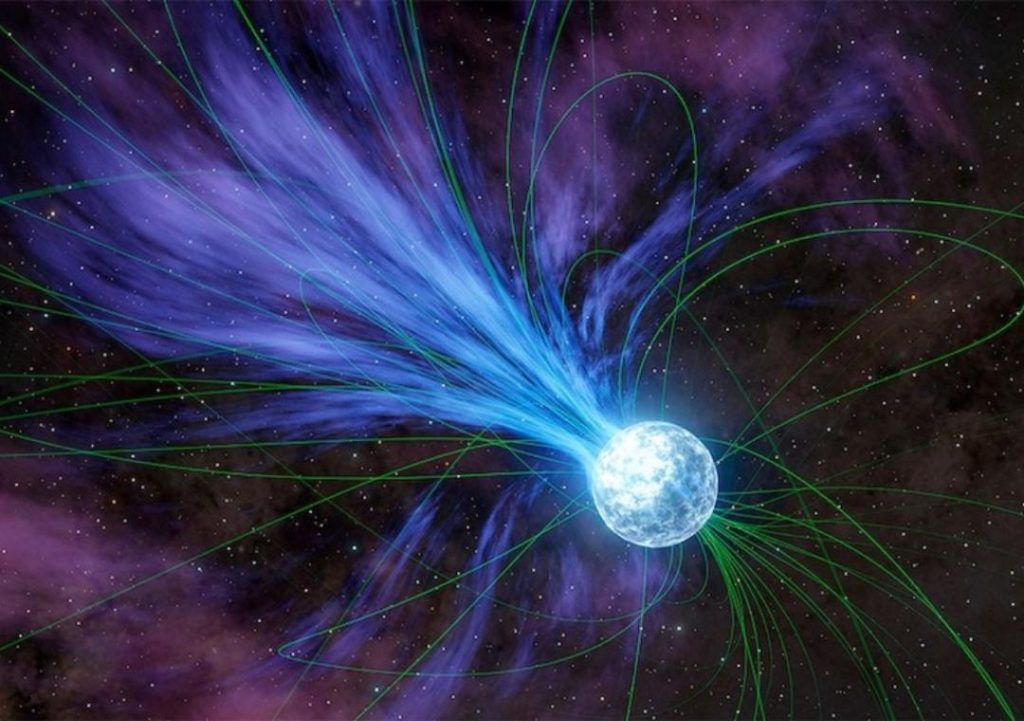
Gold & Platinum Created Through Neutron Stars’ Explosions: Study
For centuries, humans have been fascinated by the origins of precious metals like gold and platinum. While we have long known that these metals are found naturally on Earth, the mysteries surrounding their creation have remained shrouded in mystery. However, a recent study led by Columbia University student Anirudh Patel has shed light on the cosmic events that helped create these valuable elements.
According to the study, highly magnetized neutron stars, also known as magnetars, played a crucial role in the creation of gold and platinum. These neutron stars are incredibly powerful and have the ability to produce massive explosions, releasing flares that contain the elements we’re interested in.
The study suggests that magnetars exploded and released flares containing gold and platinum approximately 20 years ago. This event is not unique, as it’s believed that these explosions occur approximately once per decade in the Milky Way galaxy and annually across the observable universe.
So, what exactly are magnetars and how do they help create gold and platinum? Let’s dive into the details.
What are Magnetars?
Magnetars are a type of neutron star that is characterized by its extremely strong magnetic field. These stars are born from the collapse of massive stars, which undergo a supernova explosion. During this process, the star’s core collapses into a neutron star, with a magnetic field that is millions of times stronger than the Earth’s magnetic field.
Magnetars are different from other types of neutron stars because of their intense magnetic fields, which cause them to produce powerful flares and bursts of energy. These flares can be so powerful that they can be detected from millions of light-years away.
How Do Magnetars Create Gold and Platinum?
The process of creating gold and platinum through magnetar explosions is complex and involves a series of nuclear reactions. Here’s a simplified explanation:
When a magnetar explodes, its intense magnetic field causes the surrounding material to heat up to incredibly high temperatures. This heat energy is then used to create a massive cloud of plasma, which is made up of charged particles.
Within this cloud of plasma, nuclear reactions take place, involving the fusion of atomic nuclei. These reactions involve the interaction of particles such as neutrons, protons, and alpha particles, which collide and merge to form heavier elements.
Gold and platinum are created through these nuclear reactions, which involve the fusion of lighter elements such as iron and nickel. The resulting elements are then dispersed throughout the galaxy, eventually making their way to Earth through various astronomical processes.
What Does This Mean for Our Understanding of the Universe?
The discovery that magnetars are responsible for creating gold and platinum has significant implications for our understanding of the universe. It highlights the incredible complexity and beauty of cosmic events, and the role that neutron stars play in shaping the chemical composition of the universe.
Furthermore, this study demonstrates the importance of continued research into the mysteries of the universe. By studying the properties of magnetars and their role in creating precious metals, scientists can gain a deeper understanding of the fundamental laws of physics and the evolution of the universe.
Conclusion
The study led by Anirudh Patel has shed new light on the origins of gold and platinum, revealing the crucial role that magnetars play in their creation. These incredible cosmic events have helped shape the chemical composition of the universe, and continue to influence the formation of new elements.
As we continue to explore the mysteries of the universe, we are reminded of the incredible complexity and beauty of the cosmos. And who knows, maybe one day we’ll uncover even more secrets about the origins of precious metals and the incredible events that helped shape our universe.
Source:






